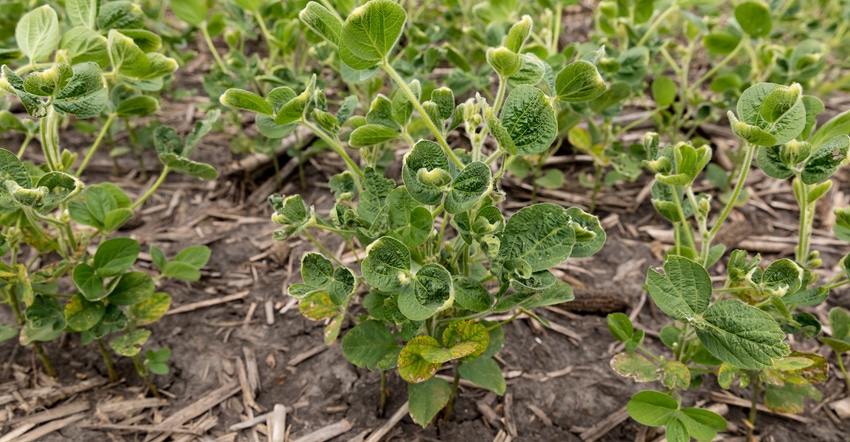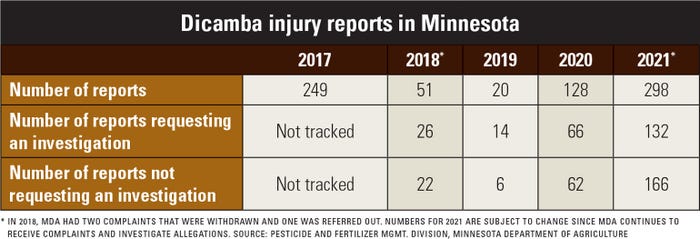
Off-target dicamba damage complaints in Minnesota hit a new high this year. As of Sept. 29, the Minnesota Department of Agriculture received 132 dicamba damage reports requesting an investigation, and 166 reports that did not request an investigation. That total of 298 complaints is more than double the total received in 2020. Last year, MDA received a total of 128 complaints — 66 requested investigations, and 62 did not.
“We’re not pleased to say this is the worst year for dicamba damage we’ve ever had,” says Joshua Stamper, MDA Pesticide and Fertilizer Management Division.
Factors that challenged chemical use this season included new EPA label changes that affected both grower management and use in Minnesota. Farmers were required to keep specific records of dicamba use per field and to follow the label strictly. Plus, EPA limited states’ abilities to impose further application restrictions under a special local need labeling requirement called 24c. From 2018 to 2020, MDA had placed an annual June 20 cutoff date on registered dicamba products based on research and pesticide misuse complaints in the state. However, EPA bumped that back to June 30 for 2021.
Additional changes for 2021 from EPA included an approved pH-buffering agent tankmixed with dicamba; a downwind buffer ranging from 240 feet to 310 feet, depending on endangered species; and additional record-keeping requirements. The additional record keeping was required for every individual application within 72 hours after dicamba application.
Stamper said that dicamba damage has been reported fencerow to fencerow in some cases, so it is hard to pinpoint where it originated. Most damage reports have come from roughly the southern two-thirds of the state.
“The challenges we’re seeing in Minnesota is that no one [involved with dicamba damage] is following the label or doing [complete] record keeping,” he says. He added that in some instances, dicamba damage could have been avoided by the grower talking with a neighbor to ask if they had susceptible crops.

MDA officials have been talking with the EPA about issuing its own dicamba use label for 2022, ag commissioner Thom Petersen says.
“The June 30 label has been too troublesome,” he says.
MDA’s goal is to announce 2022 dicamba rules the first week of December.
“We’d like to make a timely decision for growers,” Stamper adds.
Grower input
Bob Worth, a Lake Benton soybean grower and chair of the state’s Drift Task Force, said the nine-member committee met three times to discuss dicamba damage across the state. The committee then sent a letter with recommendations to MDA on how address the situation. Worth declined to share what those recommendations were.
“It’s up to MDA to decide what to do, but EPA has made it very difficult for them,” Worth says. “We gave our recommendations early to give MDA time to work with EPA.”
He acknowledged that the additional record keeping was a big change in 2021. Growers had to fill out a 20-item page each time they sprayed.
“Dicamba is a product that has tough rules to follow, but it has to stay put,” he adds.
The 2021 growing season, with the drought’s heat and lack of rain, may have caused some volatilization, Worth says. Plus, dicamba caused problems when applied in late June in areas where soybeans were in R1 and flowering.
With Petersen in charge at MDA, Worth is confident that soybean grower concerns are heard and considered in decision-making. Whether EPA will be open to those same concerns and possible changes will be known by December.
About the Author(s)
You May Also Like






